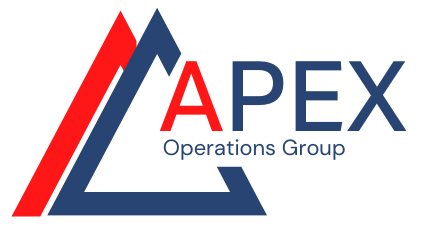Set a Vision & Work Towards It

A clear vision, effective communication, and a commitment to continuous improvement are absolutely key to the success of any small business. We're exploring the process and importance of defining a clear vision, how to communicate it effectively to all employees, and the role continuous improvement plays in achieving that vision. By understanding these key aspects, small business owners can unlock their business' full potential and drive long-term success.
The Significance of a Clear Vision:
Having a crystal clear idea of what you want your business to achieve is the foundation for success. A clear vision provides direction, aligns your efforts, and helps you make informed decisions. Here are some reasons why a clear vision is crucial:
Goal-setting: A vision acts as a compass, guiding your business towards specific goals and objectives. It helps you prioritize tasks and allocate resources effectively.
Motivation: A well-defined vision inspires and motivates both you and your employees. It creates a sense of purpose and fosters a collective drive to work towards a common goal.
Decision-making: When faced with challenges or opportunities, a clear vision helps you make decisions that align with your long-term objectives. It provides clarity amidst ambiguity.
Communicating the Vision Effectively:
Once you have a clear vision, it is essential to communicate it effectively to your entire workforce. Here are some best practices to ensure that everyone is on the same page and understands their role in achieving the vision:
Consistent Messaging: Craft a compelling and concise vision statement that reflects your aspirations. Make sure this statement is communicated consistently across all channels, including company meetings, newsletters, and internal communications.
Two-way Communication: Encourage open and transparent communication within your organization. Provide opportunities for employees to share their thoughts, ask questions, and provide feedback regarding the vision and their understanding of it.
Visual Aids: Utilize visual aids such as infographics, charts, or videos to convey your vision in a memorable and engaging way. Visuals can enhance understanding and create a stronger connection with your employees.
Employee Engagement: Involve your employees in the vision-setting process. When they feel included and valued, they become more committed to achieving the vision. Foster a sense of ownership and encourage employees to align their individual goals with the overarching vision.
The Power of Continuous Improvement:
Achieving your vision is just the beginning. To sustain success and remain competitive, small businesses must embrace a culture of continuous improvement. Here are the benefits of continuous improvement and strategies to implement it effectively:
Adaptability: By embracing continuous improvement, you foster a culture of adaptability and agility. This enables your business to respond swiftly to changing market trends, customer needs, and technological advancements.
Innovation: Continuous improvement encourages creativity and innovation within your organization. It empowers employees to identify inefficiencies, suggest improvements, and implement innovative solutions.
Learning and Growth: Emphasize the importance of learning and development. Provide opportunities for employees to acquire new skills, attend training sessions, and stay updated with industry best practices. Encourage a growth mindset at all levels of the organization.
Regular Evaluations: Implement regular performance evaluations and feedback mechanisms to assess progress towards your vision. This allows you to identify areas for improvement and make necessary adjustments to stay on track.
Celebrate Milestones: Acknowledge and celebrate milestones along the way. Recognize the achievements of your employees and reward their efforts. Celebrations foster a positive work environment and motivate employees to continue striving for excellence.
Defining a clear vision, effectively communicating it to all employees, and embracing continuous improvement are vital for small business success. By aligning your workforce around a common goal, fostering effective communication, and constantly striving for improvement, you can achieve your vision and drive long-term growth. Remember, success is not a destination but a journey, and these practices will help you stay on the path to success even after you have achieved your initial vision.
Ready to set your company's vision? Let Us Help.


